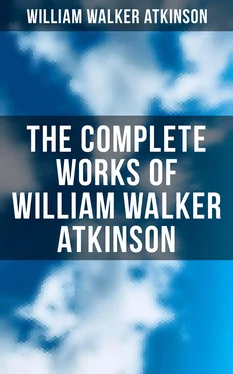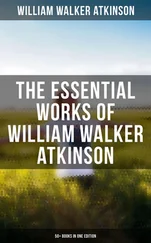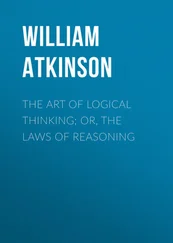“About six miles from the renowned city of the Manhattoes, in that sound or arm of the sea which passes between the mainland and Nassau, or Long Island, there is a narrow strait, where the current is violently compressed between shouldering promontories and horribly perplexed rocks and shoals. Being, at the best of times, a very violent, impetuous current, it takes these impediments in mighty dudgeon, boiling in whirlpools; brawling and fretting in ripples; raging and roaring in rapids and breakers; and, in short, indulging in all sorts of wrong-headed paroxysms. At such times, woe to any unlucky vessel that ventures within its clutches. This termagant humor, however, prevails only at certain times of tide. At low water, for instance, it is as pacific a stream as you would wish to see; but as the tide rises it begins to fret; at half tide it roars with might and main like a bull bellowing for more drink; but when the tide is full it relapses into quiet, and, for a time, sleeps as soundly as an alderman after dinner.”—IRVING.
“The morning broke with sinister brightness; the air alarmingly transparent, the sky pure, the rim of the horizon clear and strong against the heavens. The wind and the wild seas, now vastly swollen, indefatigably hunted us. I stood on deck, choking with fear; I seemed to lose all power upon my limbs; my knees were as paper when she plunged into the murderous valleys; my heart collapsed when some black mountain fell in avalanche beside her counter, and the water, that was more than spray, swept round my ankles like a torrent. I was conscious of but one strong desire, to bear myself decently in my terrors, and whatever should happen to my life, preserve my character: as the captain said, we are a queer kind of beasts. Breakfast time came, and I made shift to swallow some hot tea. Then I must stagger below to take the time, reading the chronometer with dizzy eyes, and marveling the while what value there could be in observations taken in a ship launched (as ours then was) like a missile among flying seas. The forenoon dragged on in a grinding monotony of peril; every spoke of the wheel a rash, but an obliged experiment—rash as a forlorn hope, needful as the leap that lands a fireman from a burning staircase. Noon was made; the captain dined on his day’s work, and I on watching him; and our place was entered on the chart with a meticulous precision which seemed half pitiful and half absurd, since the next eye to behold that sheet of paper might be the eye of an exploring fish. One o’clock came, then two; the captain gloomed and chafed, as he held to the coaming of the house, and if ever I saw dormant murder in man’s eye, it was in his. God help the hand that should have disobeyed him.”— STEVENSON: The Wrecker .
Chapter VIII.
Figurative Speech
Table of Content
QUACKENBOS SAYS: “Figurative Language implies a departure from the simple or ordinary mode of expression; a clothing of ideas in words which not only convey the meaning, but, through a comparison or some other means of exciting the imagination, convey it in such a way as to make a lively and forcible impression on the mind. Thus, if we say: ‘Saladin was shrewd in the council, braw in the field,’ we express the thought in the simplest manner. But if we vary the expression thus: ‘Saladin was a fox in the council, a lion in the field,’ we clothe the same sentiment in figurative language. Instead of cunning and courage, iWe introduce the animals that possess these qualities in the highest degree, and thus present livelier images to the mind.”
What are known as “figures of rhetoric” are the numerous individuals of a large class of language forms, the characteristic quality of which is deviation from the ordinary, plain and practical application of words. We find them everywhere in all forms of verbal expression. They give beauty, life and strength to style, and, as Scott says: “it would perhaps be truer to say that they have the power of arousing in the reader or hearer the same emotional and imaginative processes which gave birth to them in the mind of the writer .” In other words, they are powerful instruments or agents of suggestion .
Rhetoricians have devoted much time, attention and space to the task of analyzing, defining and classifying the various rhetorical figures. By refining the definitions and classification, some authorities have succeeded in enumerating nearly three hundred classes of rhetorical figures. Such classification is, however, of but little practical value to the general student. The modern text. books generally confine themselves to a consideration of not over ten or twelve of the more important classes. The following are the more important Rhetorical Figures of Imagery:
I. Metaphor , or “a figure of speech by which a word is transferred from an object to which it properly belongs to another, in such a manner that a comparison is implied though not formally expressed.” Thus: “He is a tiger,” or “She is a cat.” There is a close resemblance between a metaphor and a simile , the difference consisting of words implying comparison, such as “like” or “as.” For instance: “He is a fox,” is a metaphor ; while, “He is like a fox” is a simile . It will be seen, therefore, that every metaphor may be converted into a simile by extension; and that every simile may be converted into a metaphor, by condensation.
Hill says: “All writers agree that, other things being equal, the metaphor is more forcible than the simile; but opinions differ as to the true explanation of the fact. According to Dr. Whateley, who adopts the idea from Aristotle, the superiority of the metaphor is ascribable to the fact that ‘all men are more gratified at catching the resemblance for themselves, than at having it pointed out for them;’ according to Herbert Spencer, ‘the great economy it achieves would seem to be the more probable cause:’ but neither explanation is altogether satisfactory.” The following quotation will give a general idea of the metaphor and the simile, combined and contrasted in the same paragraph:
“Some minds are wonderful for keeping their bloom in this way, as a patriarchal gold-fish apparently retains to the last its youthful illusion that it can swim in a straight line beyond the encircling glass. Mrs. Tulliver was an amiable fish of this kind; and, after running her head against the same resisting medium for thirteen years, would go at it again to-day with undulled alacrity.”—GEORGE ELIOT: Mill on the Floss .
Writers and speakers frequently employ metaphors containing two or more images which are incongruous and which fail to blend—these are called “mixed metaphors.” The incongruous figurative jumble arising from the use of the mixed metaphor is frequently amusing and always ludicrous. For instance the old “bull:” “Every time he opens his mouth, he puts his foot in it ;” or: “With swift rapier-thrusts of irony, the prosecuting attorney applied the thumbscrews to the unwilling witness.” Or the famous instance of Dickens, who said, speaking of the street lamps: “At night, when the lamplighter had let these down, and lighted and hoisted them again, a feeble grove of dim wicks swung in a sickly manner overhead, as if they were at sea .” Or that of De Quincy who said: “the howling wilderness of the psalmody in most parish churches of the land countersigns the statement.” Or, “Boyle was the father of chemistry and brother to the Earl of Cork .” Or “A torrent of superstition consumed the land.” Or, “Trothal went forth with the stream of his people, but they met a rock: for Fingal stood unmoved; broken, they rolled back from his side. Nor did they roll in safety; the spear of the king pursued their flight .”
Читать дальше












